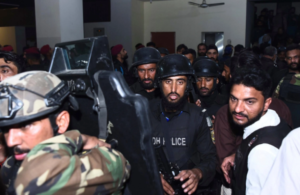Salam Watandar’s survey findings, based on responses from 412 girls and women across 26 provinces in Afghanistan, reveal that 84% of participants reported experiencing violence from the same gender (female). In contrast, 16% stated that they had never been subjected to violence by womn.
Of the total number of those who said in this survey that they have experienced violence inflicted by the same gender (female), 91.2% faced psychological violence, 4.3% faced physical violence, and another 4.3% faced both types of violence (physical and psychological).
A woman who participated in the survey, requesting anonymity, shared with Salam Watandar that she has experienced mental violence from the same gender. She expressed, “Being ridiculed may appear insignificant to others, but the feeling of being made to feel inferior and flawed is profoundly damaging. My cousins constantly mock me for being overweight, telling me I’m ugly and unattractive.”
The environment in which women have faced violence from the same gender (female), has also been examined in this survey. It noted that out of 344 women who have faced violence, 182 women (53%) said that they have experienced violence at home, and 194 women (47%) said that they have experienced violence outside the house.
42% of those who have faced violence at home said that it was at their father’s house and another 58% said that they were subjected to mental and physical violence at their husband’s house after starting married life.
Among those who experienced violence at home, 56% blamed their aunts as the primary perpetrators, while 28% pointed to their brother’s wife as the second woman responsible for the violence. Grandmothers, mothers, and stepmothers were also mentioned, contributing to the violence against the surveyed girls and women, with percentages of 10%, 2%, and 1%, respectively.
Sharifa, one of the surveyed girls, told Salam Watandar that her entire childhood and adolescence were marked by constant quarrels between her aunt and her mother. These disputes even reached a point where they nearly resulted in the separation of her parents.
“Every day there was only war in our house and my parents fought; my father used to beat my mother. The house was made as a prison for us. We could not even eat anything easily. They were good with my brothers, and always said that our life depends on the boys and you should work for them like a servant,” Sharifa said.
Also, among the women who have faced violence in their husband’s house and responded in thie survey, 83.8% blamed mother-in-law and sister-in-law (husband’s sister) as the cause of violence, 15.2 % blamed wife of the brother-in-law while and one percent blamed the second wife as the cause of violence against them.
Khaleda, another participant of the survey, says: “My mother-in-law even blocks our food and only works on us. I do not understand why? This is not the case with her daughters.”
Maryam also says: “My sister-in-law fights/argue with me every day, and I have even become psychotic. I have am educated and I wanted to work, but I could not because of her behaviors and speeches.”
The survey findings reveal that violence against women is not solely confined to family relationships. Out of a total of 344 girls and women who experienced violence by the same gender, 162 of them reported experiencing violence outside the house.
In this survey, 55% of women and girls reported that the most severe violence they experienced was from their colleagues in the workplace. Additionally, 8% said they faced harassment from their supervisors, while 15% of girls and women shared that they encountered mental and physical violence in educational settings, with female teachers identified as the perpetrators.
One of the participants, who faced violence by her colleague at work environment, says: “She was only greedy for me, my talent, and the position I had, and she wanted to get it, but because she did not have the talent, she tried to ruin my personality in my work environment.”
In this survey, it was examined that 25% of the participants blamed venomous and unhealthy social competition, 4% blamed patriarchal culture and inequality, and another 1.7% said lack of knowledge about the rights and illiteracy, and another 69.4% said all of the above, including lack of knowledge from childhood , forced marriages, mental health issues and lack of individual independence as the reasons for violence against women.
Nadia, one of the girls who participated in the survey, says: “When my cousins see, for example, that I have a good job but they do not, they become jealous of it. Everywhere, they say that Nadia is a bad girl, look at her dressing or anything I do.”
In the survey exploring ways to combat violence against women, 78% of the 412 participating girls and women expressed that raising awareness among women is crucial. Additionally, 4% emphasized the need to eradicate gender inequality between boys and girls, while 3% suggested that establishing a context for individual independence for women could contribute to eliminating the problem of violence against women.
A number of sociologists and psychologists commend Salam Watandar’s survey on the issue of violence against women. However, they criticize the survey results indicating that 84% of respondents have experienced violence from their same gwnder as alarming. They emphasize the need for serious measures to be taken to eradicate violence in Afghanistan.
Rashed Sediqi, a sociologist, says that women’s illiteracy and lack of awareness of their rights constitute the primary cause of violence against women. Mr. Sediqi highlights that violence among women can result in multi-layered unfortunate consequences for society, potentially undermining mutual acceptance and trust among people.
“Among families, women’s violence against women is more, especially women who get married and in her husband’s house, women’s violence against women is more common. We need to create more awareness in families,” he said.
Liza Haqjoo, a psychologist, notes that the sense of frustration and humiliation arising from the same gender (female) violence can pose a threat to women’s mental health. Furthermore, she emphasizes that such experiences might serve as a platform for more severe violence perpetrated by the opposite gender.
“This causes the women to feel inferior and to feel that themselves incomplete, and it causes the women to find a type of strong dependence on men. Therefore, that is when the men allow themselves to take advantage of this women’s weakness as much as he wants; even physical violence occurs.”
Women’s rights activists, expressing concern about the neglect of the issue of violence against women, say that its increasing can undermine the foundations of all legal efforts for women. They highlight that women are now more vulnerable to violence from men than before.
Najma Farahmand, a women’s rights activist, expressed her deep concern about the regrettable phenomenon of women perpetrating psychological or physical violence against their own gender. She emphasized that such actions send a damaging signal to men that they, too, can mistreat women without consequences.
“As women, we should not cause a woman or girl to suffer,” Farahmand said.
Concerns about the increase of various types of violence against women are expressed while, according to legal experts, even in the previous regime in the country, the type of violence against women was not addressed.
Zohra Elyasi, a former prosecutor in the Prohibition of Violence Against Women Prosecutor’s Office, highlights an important aspect of violence cases. While prosecutors’ offices were active in all 34 provinces of Afghanistan, Elyasi notes that women often reported cases of violence caused by men. However, during investigations, it was revealed that in some instances, the main perpetrator of the violence was a woman within the family.
“There has not been any cases which the violence was against women by women, and in some cases, we were wondered by which violent article to pursue,” Elyasi added.
Nursama Sadat, a defense lawyer, expresses concerns about the potential increase in various types of violence against women due to the collapse of institutions supporting women. According to Sadat, in a society where the voice of women is not adequately represented in judicial systems, incidents of violence against women may go unaddressed, contributing to a rise in the overall levels of violence. “Now there is no law that can protect women.”
Officials of the de-facto government assert that the rights of all individuals, including women, are safeguarded under the framework of Islamic Sharia. They say that the reported increase in violence against women is unrelated to the policies of the government.
Zabihullah Mujahid, the spokesperson for the Islamic Emirate, emphasizes that the responsibility for teaching women how to treat each other lies with families.
“Social issues have their role and Islamic guidelines also teach us that both men and women should not cause harassment to each other. The Islamic Emirate also informs religious and moral teachings through institutions, media and mosques,” Mujahid added.
The findings of this survey reveal the different layers of violence against women, while Salam Watandar recently launched a survey and showed that out of every 4 women surveyed in the survey, 3 women in Afghanistan face violence; A result that indicates the high number of violence against women in Afghanistan.
The survey conducted by Salam Watandar sheds light on the multifaceted nature of violence against women.
Recent findings indicate a concerning trend, with the survey revealing that 3 out of every 4 women in Afghanistan experience some form of violence.
This stark result underscores the prevalence and severity of violence against women in the country, emphasizing the urgent need for comprehensive efforts to address and combat this issue.






